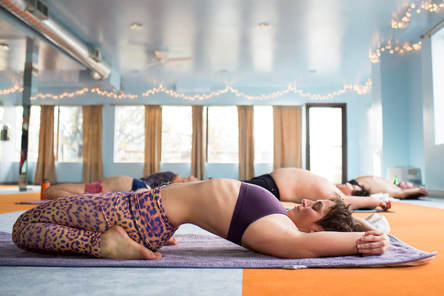 Fixed Firm pose is the first in our series of kneeling postures. From the beginning you will feel a stretching or extension in your ankles, knees and quadriceps- and as you move deeper into the posture you will also stretch the spleen, lymph glands in your armpits. This posture employs the tourniquet effect right off the bat by compressing the knee joints, and as you move deeper you'll also compress the lower back and adrenal glands. Physical benefits of Fixed Firm include: improved circulation to kidneys, liver, pancreas and bowels for improved digestion; increased flexibility of knees and ankles; boosted immune system through stimulation of the spleen and lymphatic system; improved adrenal funtion by compression in the lower back, stretching muscles of the thighs, abdomen and pelvis; flushing knees and ankles with fresh high speed blood to loosen scar tissue and relieve arthritic symptoms; improved menstrual symptoms; relief of sciatica, gout and varicose veins. One major psychological or spiritual benefit of this one (especially when dealing with knee injury or tightness) is... Patience! Keep in mind it could take you weeks, months or even years to even sit your hips down between the heels. Remember that as long as you try the right way one step at a time you are getting 100% of the benefit. Fixed Firm can be challenging for athletes with tight quads and anyone experiencing knee injuries, chronic tightness or knee pain. The key to success is: take it easy, honey. This is an anatomically correct pose! It helps rebuild a natural range of motion for the knee, which is mainly a hinge joint but also does have a bit of rotation. Only go so far in the posture as you feel discomfort- but never pain- in the knees. Posture Tips
For this one it will help you to always remember one of our favorite Bikram quotes: “Do not mess with the knees. You can mess with the gods, but you cannot mess with the knees.” – Bikram Choudhury
0 Comments
These photos were taken on Independence Day. First (the ones where my forehead is nowhere near my knee!) are what my Head to Knee and Standing Separate Leg Head to Knee poses looked like about 1 year ago, when my lower back was in continuous muscle spasm from lifting my baby the wrong way one too many times. The second photos in each pair are what my postures look like now- and also what they looked like just 5 days after my back injury.
I remember the date because I had to miss my good friends' wedding- I could not bear the pain of sitting in the car to get there. I could not pick up my daughter to hold her if she cried. For several days, I lost my independence. I could not cook my food, do my laundry, pick up a bag, open a door, or even stand for over a minute without severe pain. What could I do? I could come to yoga. And I did. I came to yoga every day for 5 days. I did very very gentle stretching. In many postures this meant I could only do the very first step or two in setting up the posture. I did not do any sit-ups. Even in the backward bending postures- and I think this part gets overlooked sometimes- I did not "kill myself," as is normally encouraged when practicing with a spine that's feeling a-ok. I got myself to the place where I could tolerate the pain, and I held it and worked my breath. My Cobra pose for example, where the instructions are to get the upper body off the floor until only the belly button is touching? I got my chin off the floor a little. Yeah. And that was my posture. It hurt! But I could breathe. And when I let it go, I felt a wash of relaxation across my back, like my back was exhaling. I wanted to share these images with you because I hope they will drive home the point our teachers are always making in class: when you're in pain you need to do less of a posture, you need to take it easy, sometimes you even need to skip a posture- and all of that is perfect. Especially for those of us who started this yoga without a specific physical limitation or pain, it can be difficult to translate what "doing less" means when we find ourselves practicing with an injury. These photos (the first in each pair) are an example of what it looks like to "do less." Notice that I didn't change a thing about the form or technique of the pose- I simply started slow and did step 1, then (maybe) step 2, etc, and stopped as soon as I needed to in the sequence. I did not concern myself with how my posture looked or felt before my injury, I just focused on what I could do right then. Since I've practiced through injury before, I knew this was the way. This yoga is meant for healing as well as for prevention of injury- depending on our goal, we need to practice in an appropriate way. I always see injuries as a gift and an opportunity to learn. Because practicing to heal injury means honing the invaluable skill of understanding and attending to my body's signals. Too much pain? Back off. Feels all right? Go for it, little by little. Too exhausted to go on? Lie down as long as you need to and enjoy the benefits of the hot, humid room. This skill can only serve me and it will never ever hurt me. If you are hurting, there is only one thing you must do to start healing: come to class! Bikram yoga works amazingly for not only chronic conditions but acute injuries as well. Do not stay home and wait until you feel better- coming to yoga will help you feel better. Using Bikram yoga for healing means coming more often and doing less. For me, one of the hardest parts of being in debilitating pain was the loss of independence. I needed others to help me do things I wanted to do for myself. So I took the one thing I could do and the one thing I knew I had to do, and I changed everything around. That's my story, but it isn't unique. It is no more than cause and effect, action and reaction. The results can be replicated by you. If you simply commit to caring for yourself during injury by practicing in a therapeutic way, Bikram yoga is sure to help you restore the independence of pain-free (or at the very least, pain-reduced!) living. And that is something worth celebrating!  After focusing on the lower back with Cobra, the upper back with Locust and the middle back with Full Locust pose, our Spine Strengthening Series concludes by tying it all together with a Bow! A Bow pose, that is: Dhanurasana. ;) In Bow pose, we practice keeping a good tight grip on the feet while kicking the legs up and back to move the total spine into a backward bend- against the force of gravity! Sounds purty impressive, doesn't it? It sure is, and here's why: Bending your spine backwards using your strength counter-balances the many forward-bending positions you put your body in throughout the day. This helps to straighten out your spine, which improves posture and relieves or prevents back pain. Holding your feet from outside while you kick causes the rib cage to open, improving pigeonchest and permitting maximum expansion of lungs and increased oxygen intake. Balancing on a stretched-out belly while compressing the back improves function of the intestines, liver, kidneys, and spleen. But that's not all: Back-bending revitalizes the spinal nerves by increasing circulation along the spine. Bow pose strengthens abdominal muscles, upper arms, thighs and hips while developing flexibility of the scapula, latissimus dorsi, deltoid, and trapezius muscles. Improved posture, pain prevention and relief, strength, flexibility- all that in just 20 seconds at a time. Not too shabby, eh? TIP: "What if I Can't Get My Feet??" If you are unable to grab both of your feet (yet!) that is perfectly normal. It might be a stiff knee, back or shoulder that's limiting you. Simply keep coming and trying the right way- your body will open up in time! Here's how to start:
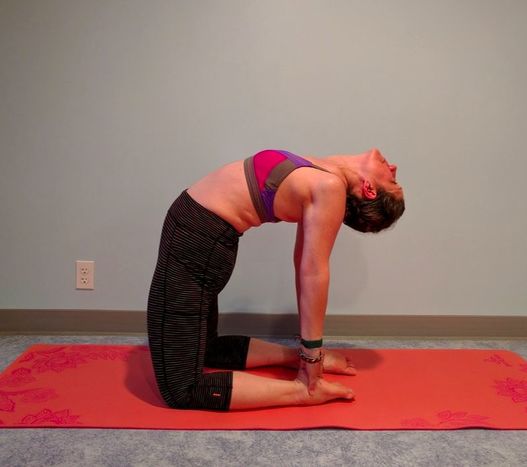 “My first Bikram yoga class was in New York City about 16 years ago when a friend invited me to share in her new obsession. One day after work I jumped on the subway and made my way downtown to Chambers Street with just enough time before class to chug a Starbucks latte… I didn’t know anything about this hot yoga! Halfway through the standing series I ran out of the room and threw up in an aptly placed trashcan by the studio door. “It took me a couple of years to gather the courage to go back, and this time I knew how to better prepare for class. I came hydrated, went to find peace and some relief from the stress NYC provided with unlimited generosity. I walked into class angry, grumpy, tired and walked out of class serene and sweaty: I was hooked! “For me, Bikram yoga is primarily my mental health medicine. Sure, it keeps me toned and focused on healthy eating, but what it really does is reorganize my energy and keep my brain and body in balanced, optimal working order. One class solves a design problem, another class offers forgiveness or releases sadness, some classes cultivate joy or compassion, or sometimes it’s just the sweat that washes away the day. “Recently I was surprised to receive physical healing for my body. This is what most people proclaim as their primary benefit! But, because I’ve never had injuries, I didn’t seek yoga to heal my physical body. This past winter (probably from the stress of driving in that dangerous winter weather) I experienced great sciatic pain. The pain disturbed my sleep, distracted my work, and was overall exhausting. During my 30-day-yoga-challenge, I worked through the pain, gently stretched the sciatic nerve, and used the meditation of class to help relax the spasms of muscles surrounding the nerve. The pain has gone away! This past spring I ‘threw my back out’ from sitting in a 3-day conference. I could hardly move I was in so much pain. I came to yoga every day for a week and each day the pain was reduced and my range of motion was increased. “What is magical is how Bikram yoga gives me what I need each class. Each day is different. Bikram yoga is unconditional in offerings and I am always finding more ways to appreciate and learn from my practice. As teacher Bill says: “You are your best teacher!” Using Bikram yoga to feel better requires that I listen carefully to how my body speaks to me. I am learning how and when I can be my own healer, or to work in concert with other modalities of healing. “Here at Bikram Yoga St. Johns, we are all part of a community of positivity and joy! This studio is unlike any other studio I have practiced in. Here we are all equal, all included, we are all working together to be our better self, we are open, vulnerable and strong together. Being part of this community is one of the most special gifts I have received this year and I thank you all for being here with me! See you in the hot room soon.” BONUS: Charlotte is our cuurent featured artist at the studio! Check out her colorful, joyful prints on your way to the yoga room today... |
AuthorHHY Founder, Yoga Business Coach, yoga-doer and life-lover, Kay Afif! Categories
All
|

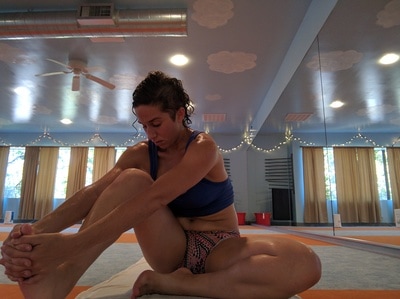
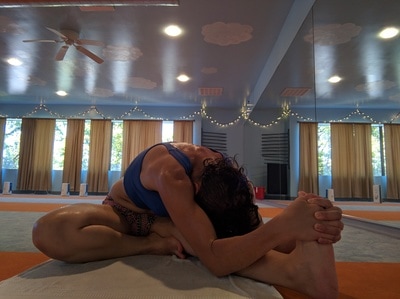
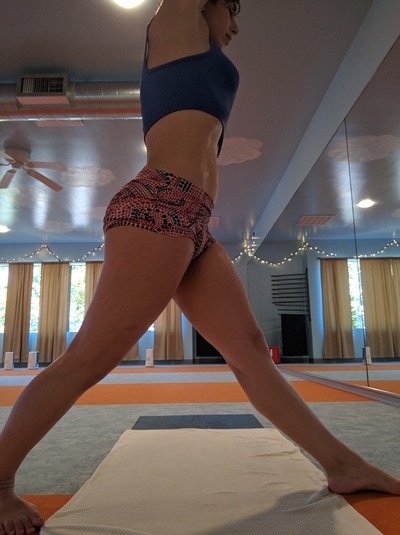
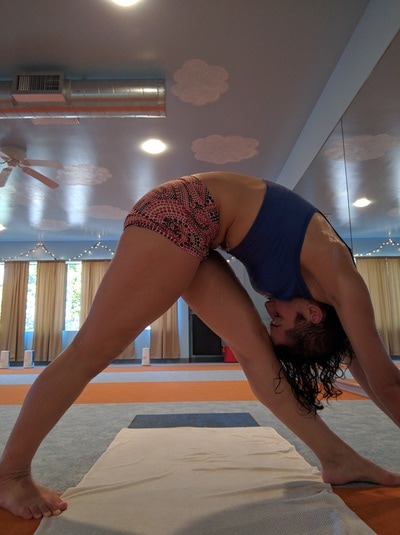
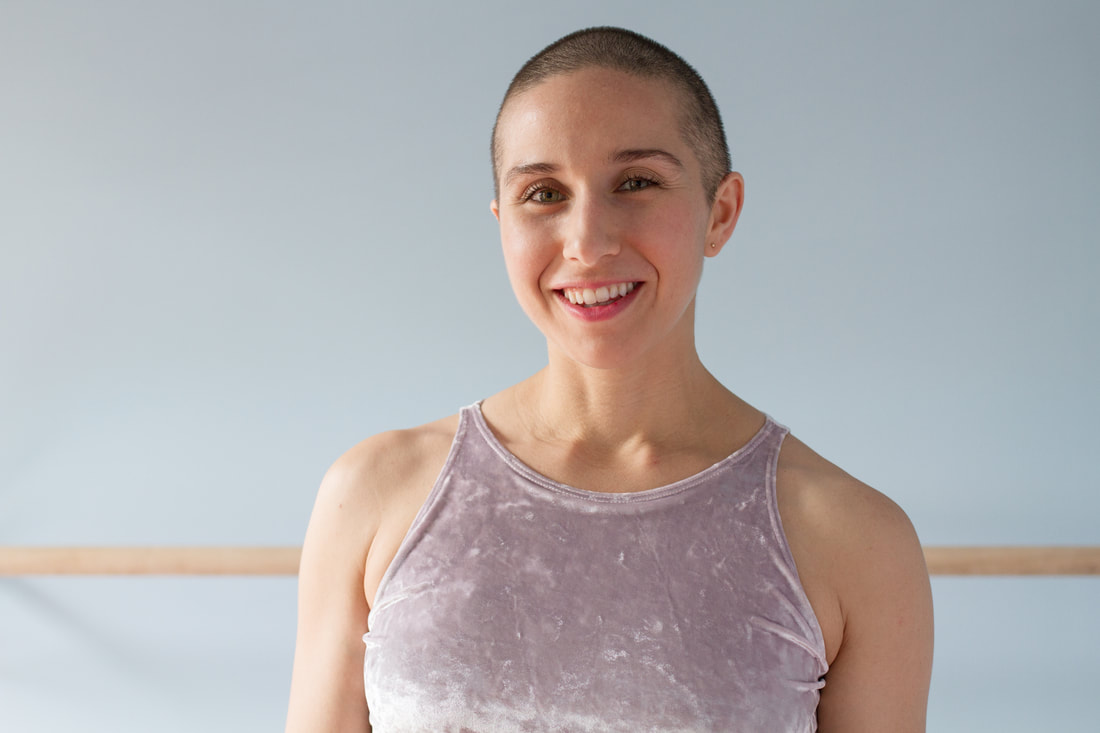
 RSS Feed
RSS Feed
